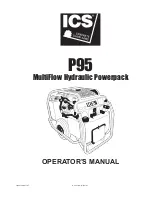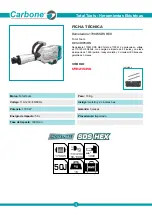
8
| English
1 619 P11 513 | (20.9.13)
Bosch Power Tools
The optimal orbital action setting for the respective applica-
tion can be determined through practical testing. The follow-
ing recommendations apply:
– Select a lower orbital action setting (or switch it off) for a
finer and cleaner cutting edge.
– For thin materials such as sheet metal, switch the orbital
action off.
– For hard materials such as steel, work with low orbital
action.
– For soft materials and when sawing in the direction of the
grain, work with maximum orbital action.
Adjusting the Cutting Angle (see figure C)
The base plate
8
can be swivelled by 45° to the left or right for
mitre cuts.
Loosen the screw
16
and lightly slide the base plate
8
in the
direction of the saw blade
10
.
For adjustment of precise mitre angles, the base plate has ad-
justment notches on the left and right at 0° and 45°. Swivel
the base plate
8
to the desired position according to the scale
15
. Other mitre angles can be adjusted using a protractor.
Afterwards, push the base plate
8
to the stop toward the
mains cable.
Tighten the screw
16
again.
The splinter guard
14
can not be inserted for mitre cuts.
Offsetting the Base Plate (see figure D)
For sawing close to edges, the base plate
8
can be offset to
the rear.
Completely unscrew the screw
16
using the Allen key
5
.
Take the base plate
8
off and remount it offset again so that
the screw
16
can be screwed into the rear bolt hole
18
.
Push the base plate
8
toward the positioning pin/mark
17
un-
til it engages. Now, tighten the screw
16
again.
Sawing with the base plate
8
offset is possible only with a mi-
tre angle of 0°. In addition, the parallel guide with circle cutter
21
(accessory) as well as the splinter guard
14
may not be
used.
Sawdust Blower Device
With the air jet of the sawdust blower device
6
, the cutting line
can be kept free of dust and chips.
Starting Operation
Observe correct mains voltage! The voltage of the pow-
er source must agree with the voltage specified on the
nameplate of the machine. Power tools marked with
230 V can also be operated with 220 V.
Switching On and Off
To
start
the machine, press the On/Off switch
3
.
To
lock
the On/Off switch, keep it pressed and additionally
push the lock-on button
4
.
To
switch off
the machine, release the On/Off switch
3
. When
the On/Off switch
3
is locked, press it first and then release it.
Controlling/Presetting the Stroke Rate (GST 85 PBE)
Increasing or reducing the pressure on the On/Off switch
3
en-
ables stepless stroke-rate control of the switched-on machine.
Light pressure on the On/Off switch
3
results in a low stroke
rate. Increasing the pressure also increases the stroke rate.
When the On/Off switch
3
is locked, it is not possible to re-
duce the stroke rate.
With the thumbwheel for stroke rate preselection
2
, the
stroke rate can be preset and changed during operation.
The required stroke rate is dependent on the material and the
working conditions and can be determined by a practical trial.
Reducing the stroke rate is recommended when the saw
blade engages in the material as well as when sawing plastic
and aluminium.
After longer periods of work at low stroke rate, the machine
can heat up considerably. Remove the saw blade from the ma-
chine and allow the machine to cool down by running it for ap-
prox. 3 minutes at maximum stroke rate.
Working Advice
Before any work on the machine itself, pull the mains
plug.
When working small or thin work pieces, always use a
sturdy support or a saw table (accessory).
Check wood, press boards, building materials, etc. for foreign
objects such as nails, screws or similar, and remove them, if
required.
While working, hold the machine by the handle
12
and guide
it alongside the desired cutting line. For precise cuts and quiet
running, guide the machine additionally with the other hand
by the rotating handle
1
.
Contact Protector
The contact protector
11
attached to the casing prevents ac-
cidental touching of the saw blade during the working proce-
dure and may not be removed.
Plunge Cutting (see figure E)
The plunge cutting procedure is only suitable for treat-
ing soft materials such as wood, plaster board or simi-
lar! Do not work metal materials with the plunge cut-
ting procedure!
Setting 0
No orbital action
Setting I
Small orbital action
Setting II
Medium orbital action
Setting III
Large orbital action
Sawdust-blower setting I:
Low blow effect for sawing in metal and operation
with coolant/lubricant.
Sawdust-blower setting II:
Medium blow effect for sawing materials with low
chip removal rate, e. g., hardwood.
Sawdust-blower setting III:
Large blow effect for sawing materials with high chip
removal rate, e.g., softwood, plastic, etc.
A –B:
Low stroke rate
C –D:
Medium stroke rate
E:
High stroke rate
OBJ_BUCH-689-006.book Page 8 Friday, September 20, 2013 11:26 AM









































